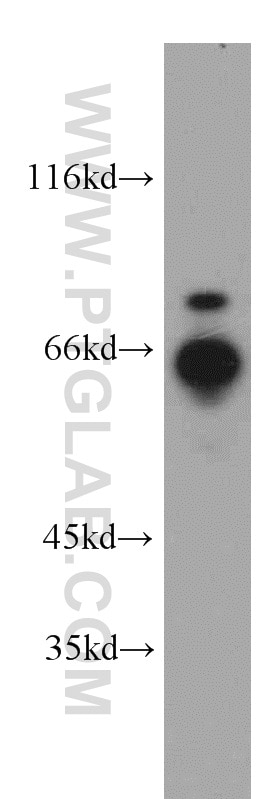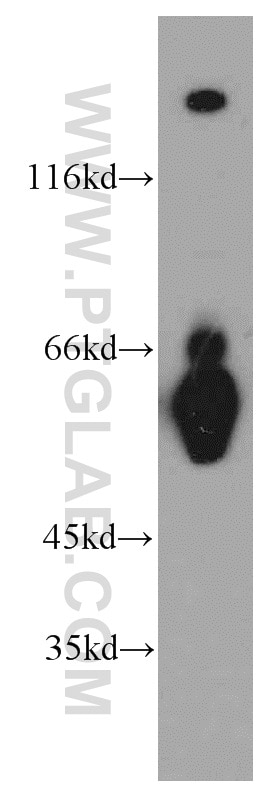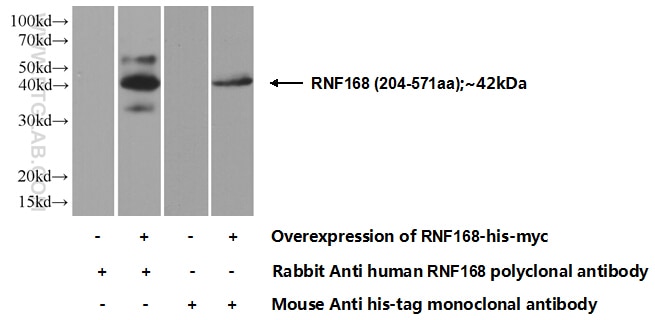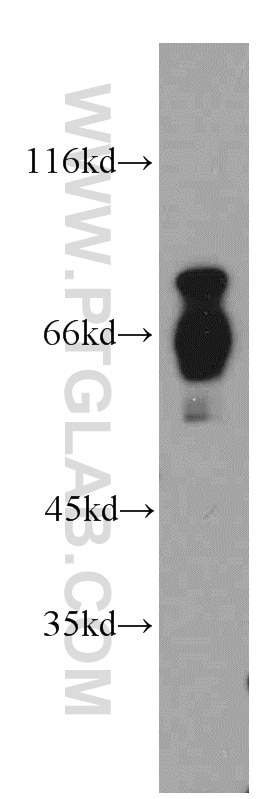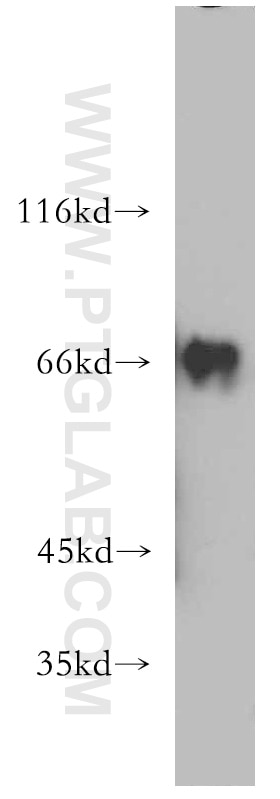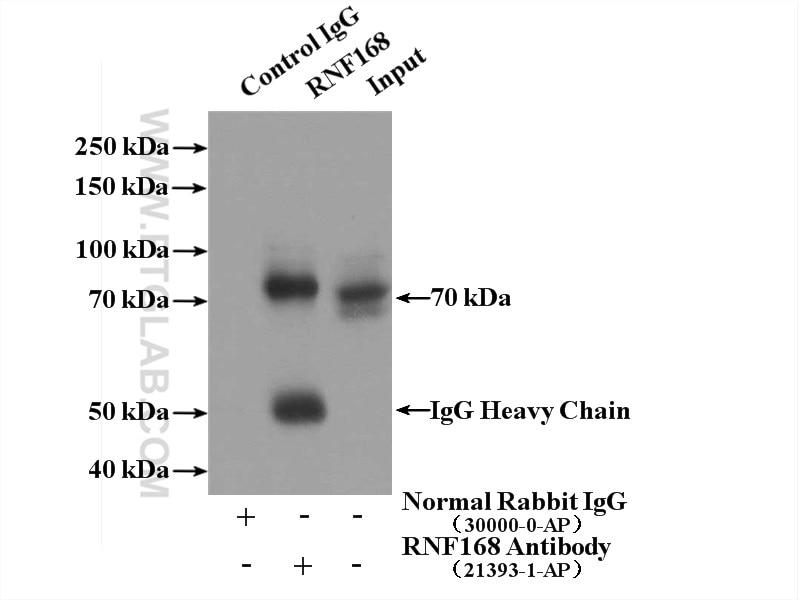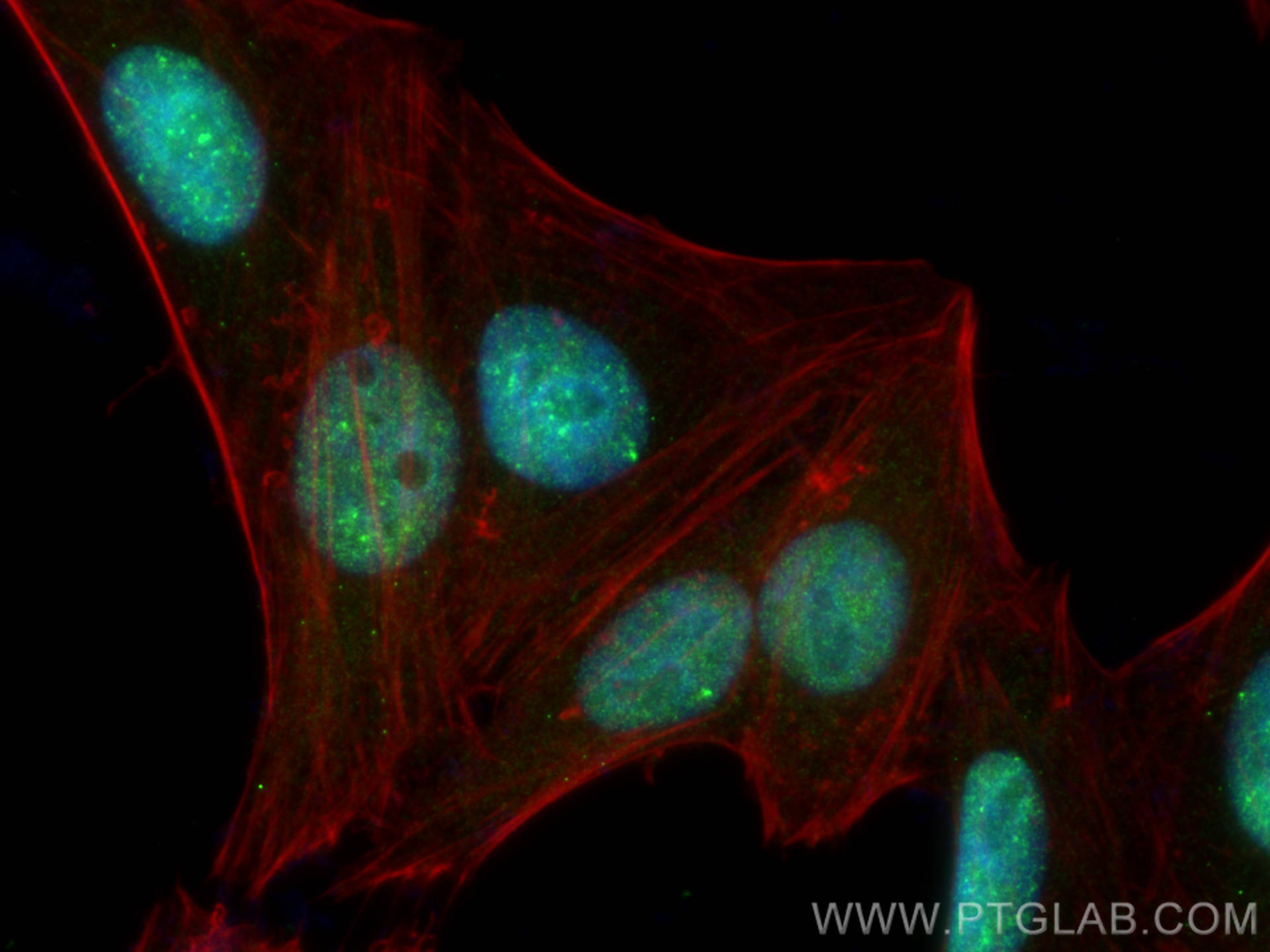- Phare
- Validé par KD/KO
Anticorps Polyclonal de lapin anti-RNF168
RNF168 Polyclonal Antibody for WB, IF/ICC, IP, ELISA
Hôte / Isotype
Lapin / IgG
Réactivité testée
Humain
Applications
WB, IHC, IF/ICC, IP, CoIP, ELISA
Conjugaison
Non conjugué
N° de cat : 21393-1-AP
Synonymes
Galerie de données de validation
Applications testées
| Résultats positifs en WB | cellules HepG2, cellules HEK-293 transfectées, cellules HeLa, cellules Jurkat, tissu cérébral humain |
| Résultats positifs en IP | cellules HepG2 |
| Résultats positifs en IF/ICC | cellules HepG2, |
Dilution recommandée
| Application | Dilution |
|---|---|
| Western Blot (WB) | WB : 1:1000-1:4000 |
| Immunoprécipitation (IP) | IP : 0.5-4.0 ug for 1.0-3.0 mg of total protein lysate |
| Immunofluorescence (IF)/ICC | IF/ICC : 1:400-1:1600 |
| It is recommended that this reagent should be titrated in each testing system to obtain optimal results. | |
| Sample-dependent, check data in validation data gallery | |
Applications publiées
| KD/KO | See 1 publications below |
| WB | See 10 publications below |
| IHC | See 1 publications below |
| IF | See 4 publications below |
| IP | See 3 publications below |
| CoIP | See 1 publications below |
Informations sur le produit
21393-1-AP cible RNF168 dans les applications de WB, IHC, IF/ICC, IP, CoIP, ELISA et montre une réactivité avec des échantillons Humain
| Réactivité | Humain |
| Réactivité citée | Humain |
| Hôte / Isotype | Lapin / IgG |
| Clonalité | Polyclonal |
| Type | Anticorps |
| Immunogène | RNF168 Protéine recombinante Ag16055 |
| Nom complet | ring finger protein 168 |
| Masse moléculaire calculée | 571 aa, 65 kDa |
| Poids moléculaire observé | 65-70 kDa |
| Numéro d’acquisition GenBank | BC033791 |
| Symbole du gène | RNF168 |
| Identification du gène (NCBI) | 165918 |
| Conjugaison | Non conjugué |
| Forme | Liquide |
| Méthode de purification | Purification par affinité contre l'antigène |
| Tampon de stockage | PBS with 0.02% sodium azide and 50% glycerol |
| Conditions de stockage | Stocker à -20°C. Stable pendant un an après l'expédition. L'aliquotage n'est pas nécessaire pour le stockage à -20oC Les 20ul contiennent 0,1% de BSA. |
Protocole
| Product Specific Protocols | |
|---|---|
| WB protocol for RNF168 antibody 21393-1-AP | Download protocol |
| IF protocol for RNF168 antibody 21393-1-AP | Download protocol |
| IP protocol for RNF168 antibody 21393-1-AP | Download protocol |
| Standard Protocols | |
|---|---|
| Click here to view our Standard Protocols |
Publications
| Species | Application | Title |
|---|---|---|
Mol Cell A di-acetyl-decorated chromatin signature couples liquid condensation to suppress DNA end synapsis | ||
Cell Death Differ ZNF451 collaborates with RNF8 to regulate RNF168 localization and amplify ubiquitination signaling to promote DNA damage repair and regulate radiosensitivity | ||
Nat Commun Non-canonical function of DGCR8 in DNA double-strand break repair signaling and tumor radioresistance. | ||
Nucleic Acids Res GLP-catalyzed H4K16me1 promotes 53BP1 recruitment to permit DNA damage repair and cell survival. | ||
Theranostics A feedforward circuit shaped by ECT2 and USP7 contributes to breast carcinogenesis. | ||
J Cell Biol DUX4-induced HSATII transcription causes KDM2A/B-PRC1 nuclear foci and impairs DNA damage response |
Avis
The reviews below have been submitted by verified Proteintech customers who received an incentive for providing their feedback.
FH Shunbin (Verified Customer) (05-14-2024) | Great. A single specific band, no background
 |
FH Shunbin (Verified Customer) (05-14-2024) | Great. A single specific band without background
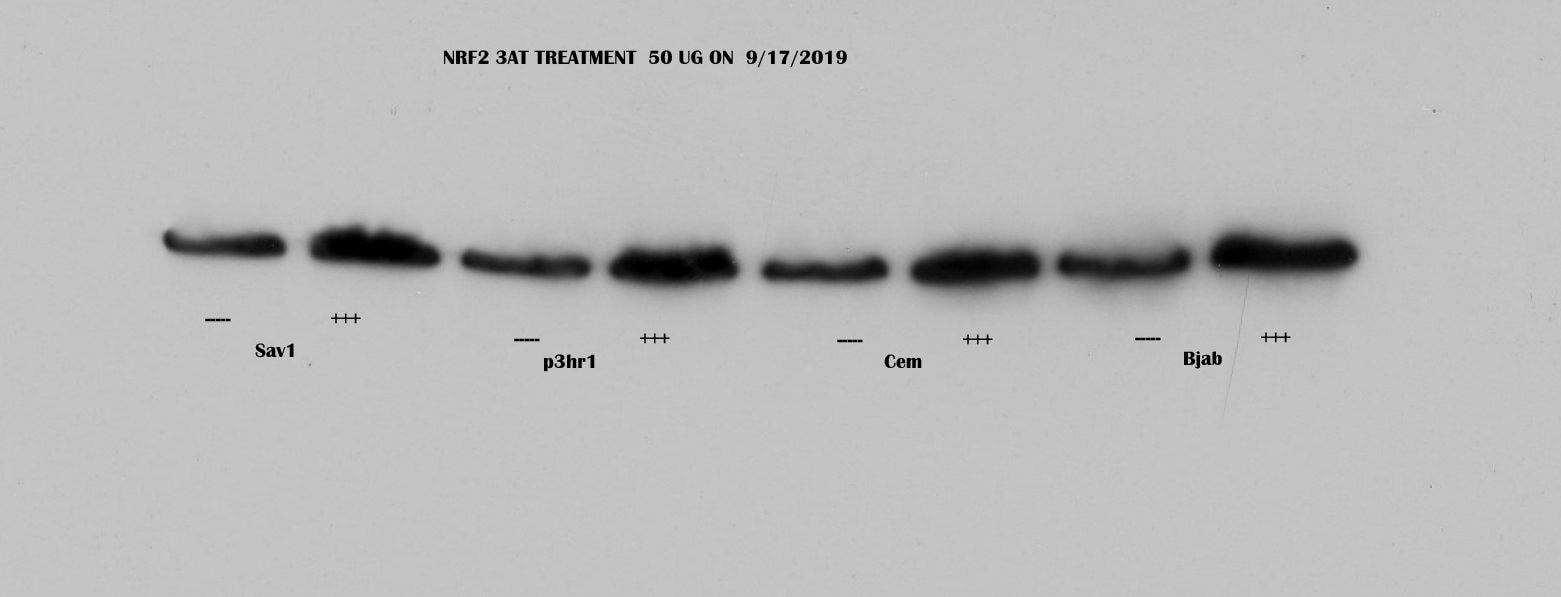 |
